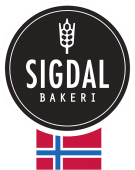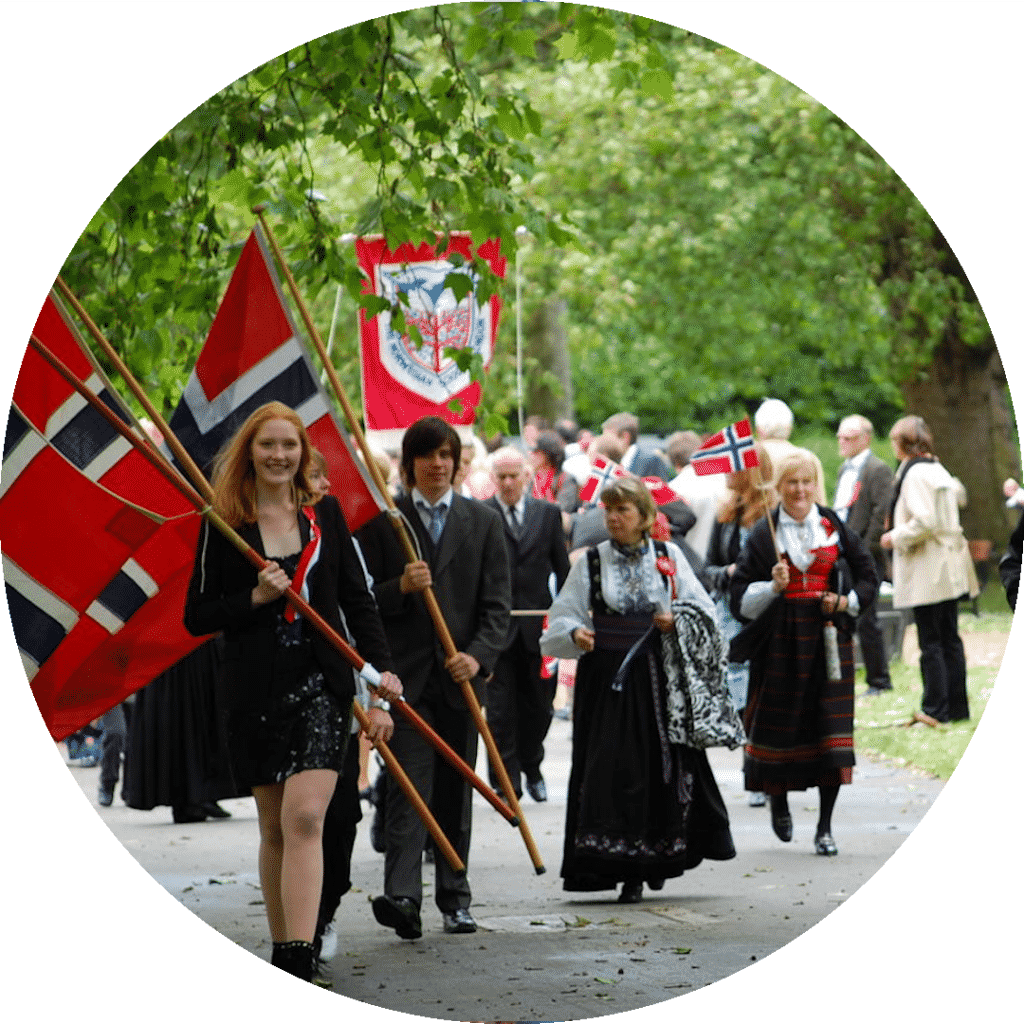
Syttende May, Norwegian bank holidays
In contrast to many countries where military parades are the main focus, Syttende Mai is a strong event that honours children, future graduates, as well as many cultural and sports associations. In every town and village, on land or at sea, the event is a great moment of popular jubilation.
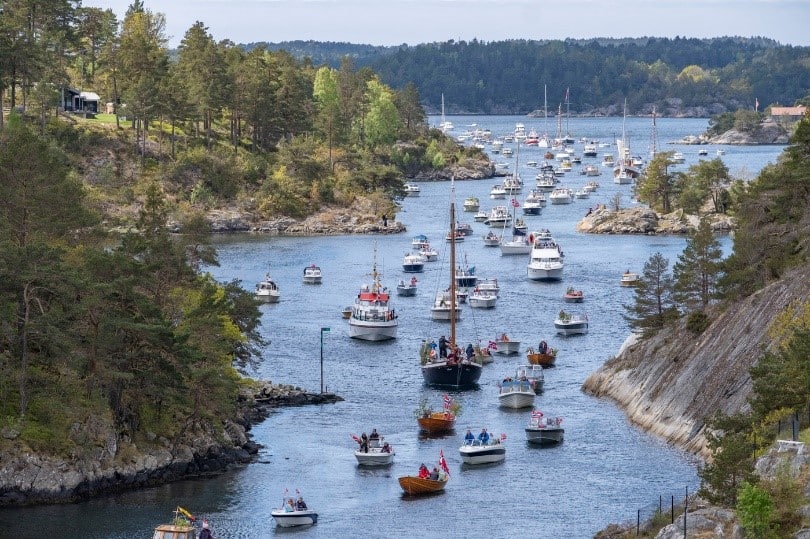
For the occasion, everyone puts on their best clothes, including the famous "bunad", a traditional costume which, depending on the way it is made (patterns, colours, embroidery, jewellery, accessories), usually makes it possible to guess which region its owner comes from. There are more than 100 different "bunads" decorated with hand-woven silver embroidery on scarves or shawls. Some are made according to local customs, others were designed in the 1900s with the fabrics of the time. Traditionally, people choose the "bunad" according to the origin of their families.
The day is celebrated with flags, music, songs, speeches and the laying of wreaths in front of the memorials. In churches, the day is marked by a church service.
Whatever the location of the celebration, the parades take place according to a precise chronology: In the morning, it is the children who parade with banners in the colours of their schools, often accompanied by a school band; then comes the parade
sports, cultural and humanitarian associations; and finally, it is the future baccalaureate students who are parading around, the "Russ" as the Norwegians call them.
The parade ends with the traditional singing of the national anthem "Ja, vi elsker debt landet" and the royal anthem "Kongesangen".
In Oslo, the long procession passes through Karl Johans Street to march past the palace where the entire royal family greets the participants in return.
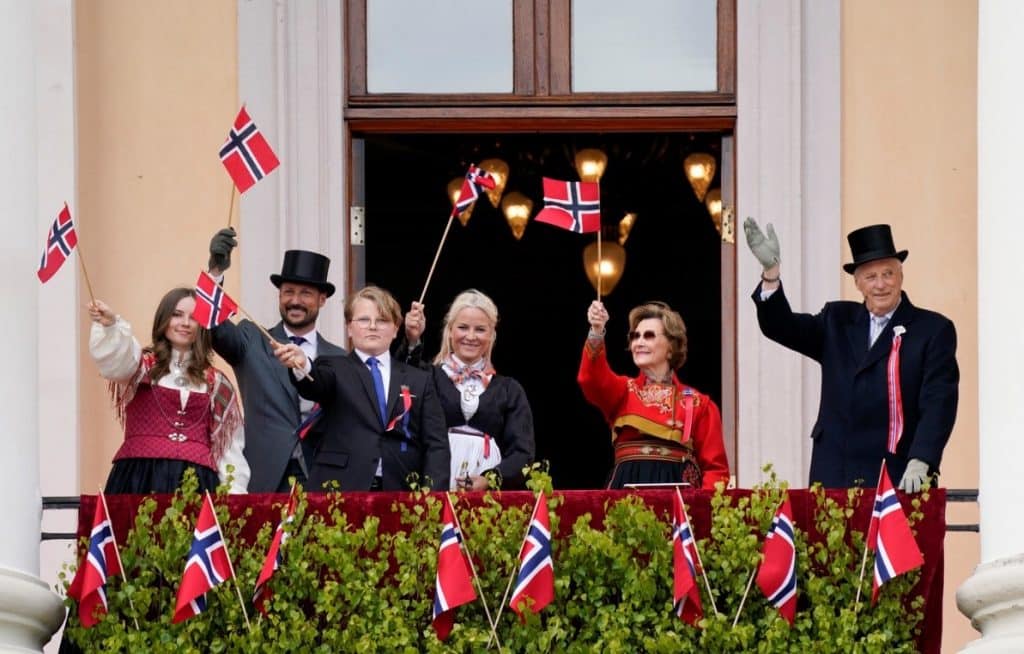
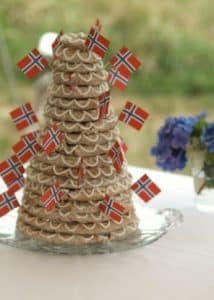
The day then continues in town or at home, where family and friends share a festive meal. The menu includes traditional dishes such as smoked salmon, herring, salted and dried sausages, Sigdal knekkebrød, aquavit and the well-known "kransekake", an almond cake formed by a series of rings stacked on top of each other to form a cone.
Of course, Sigdal's crackers join in this national celebration to wish all Norwegians a wonderful day.
